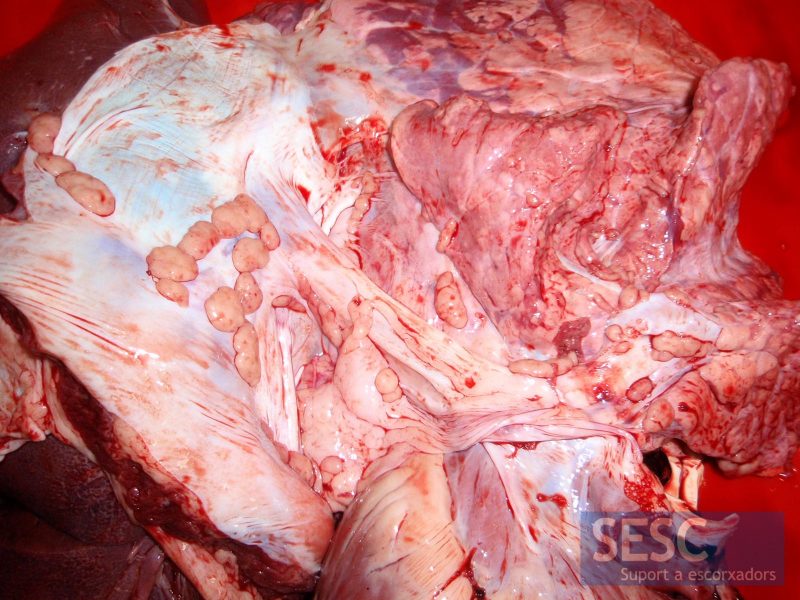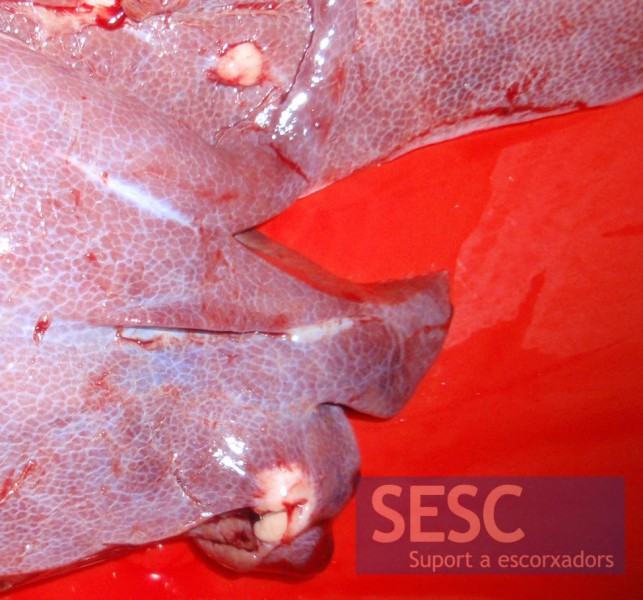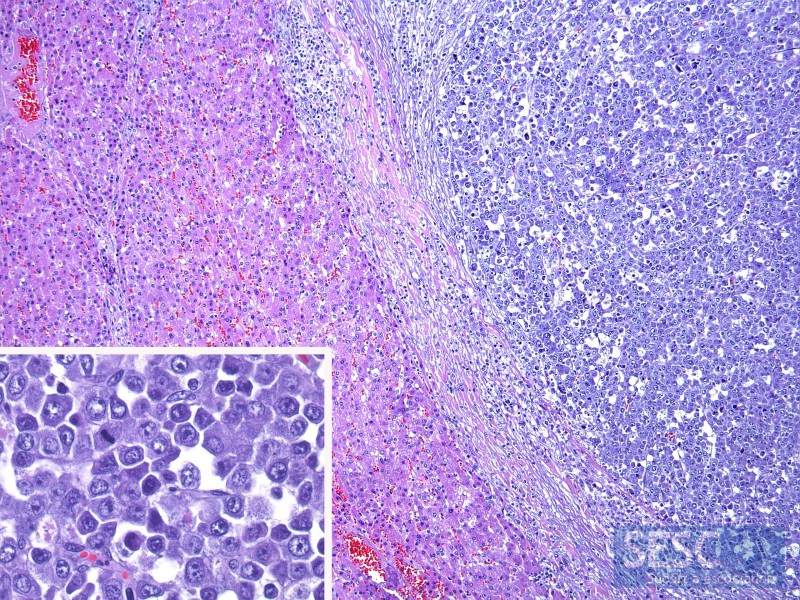03/11/2014
|
Cavidad abdominal (porcino)
2
Lesiones nodulares en la pleura y vísceras de una canal de cerdo
Aunque no presentan un aspecto caseoso la sospecha de los inspectores era de un caso de tuberculosis.
El estudio histopatológico evidenció que se trataba de una neoplasia maligna de células redondas: linfosarcoma. En el cerdo, las lesiones de tuberculosis tienen un carácter más proliferativo que necrótico y, macroscópicamente, pueden tener aspecto de neoplasia. Por lo tanto, era necesario descartar que se tratase de un brote de tuberculosis. Las lesiones tuberculosas en cerdo pueden estar causadas por micobacterias del complejo M.tuberculosis y por M.avium.





2 comment(s)
Thanks for your comment Martín, we had a few cases of M.avium in pigs a couple of years ago:
https://sesc.cat/lesions-granulomatoses-disseminades-en-canals-de-porci/?lang=en
Then the suspected origin of the infection was the feed fed to the animals, which was the dame in the different farms that has cases.
comment from the LinkedIn group: Swine Health, Nutrition and Production Professionals
Martín Liebstein
Clinical Research Veterinarian at RTI, LLC
There has been a recent conversation within some swine veterinarians in the US, about pigs being condemned at slaughter with similar findings to this case you have posted. Apparently, the inspector at the plant determined that the animals had lymphosarcoma. Further testing done by the company’s vet has shown that the swollen lymph nodes correlate to PCV2 diagnosis. Other vets suggested that M. avium could be playing a role, introduced by birds getting in contact with the pigs in the barn. Definitely, different diseases to be considered and a good reminder to keep our eyes and mind open.